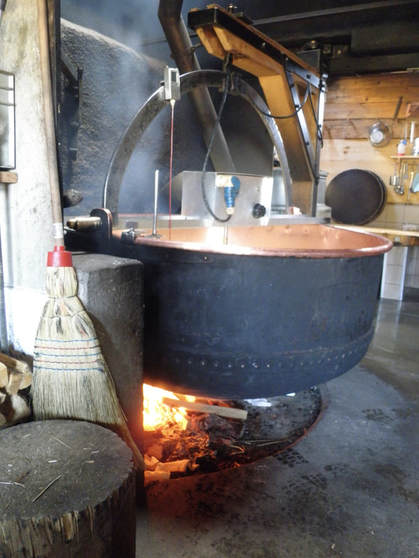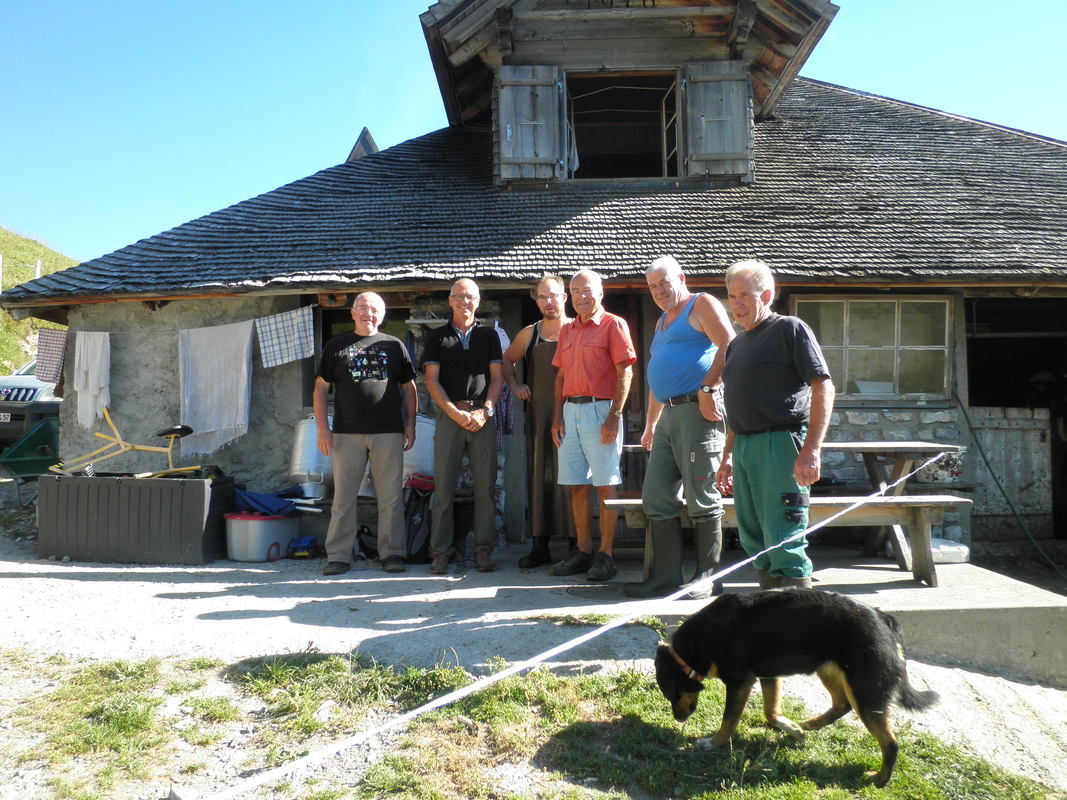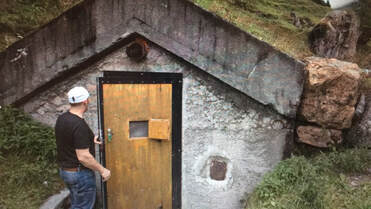|
*A bit about Gruyère Alpage During the summer months, from mid May to mid October, is the time when this extraordinary Gruyère is made. At this time of year once the snow has melted, the farmers walk their cows up onto the high alpine pastures to take advantage of the abundant summer alpine grazing. It is here in the mountains, sometimes at an altitude exceeding 2000m in often ancient alpine chalets, that the cheesemaker works. It is the botanic diversity of the alpine pasture which gives the milk, and consequently the cheese, it’s distinctive flavour. The family follows the cows and moves up into the mountains. They stay for these months in the Chalet where they sleep, cows are milked, and cheese is made. Life on the alps is labour intensive and often involves quite basic living conditions. The cows are grazed and bought to the chalet to be milked and cheese is made daily starting early each morning without pause. Within the chalet’s cheesemaking room is an area where a fire can be made on the floor. Each morning fresh milk is poured into a traditional large copper vat which is then suspended over the fire. The vat can be moved on or off the fire, depending on the point in the process of the cheesemaking and the heat required - and there is great skill involved in controlling the fire. The ceiling of the chalet comes to a high point above the fire - a form of chimney, blackened by years of fire, to let the smoke escape. The smell of smoke fills the room, and the spark of wood burning is constant. Production is limited. On average only about two cheeses are made per day. The cheese work is physical - the process and equipment not having changed much over time, but also there is the work of managing the herd, wood for the fire, and daily jobs around living in the chalet. The skill of the cheesemaker is paramount - the conditions are changing constantly; the pasture the cows are eating alters throughout the season, which in turn affects the milk; the weather conditions on the Alp can alter very quickly, altering temperatures in the cheesemaking room. So the cheesemaker has to balance these fluctuations to maintain the quality of the finished cheese. Cheeses are taken down the mountain when they are only a few days old to be matured in a central maturing house alongside the cheese of other producers. There has to be a close relationship between the cheesemaker and the affineur - they are both working together to ensure quality. Cheesemakers often have a life long commitment to sell cheese to one Affineur, and the Affineur in turn supports with training and advice. Peoples passion, skill, sense of tradition, and commitment to quality come together to enable the continued production of Gruyère Alpage - despite a new era where this form of food production is facing many challenges.
0 Comments
|
|
Slow Food Cheese: Bra, Italy September 15—18 2023 |
Featured in NEWS
|


